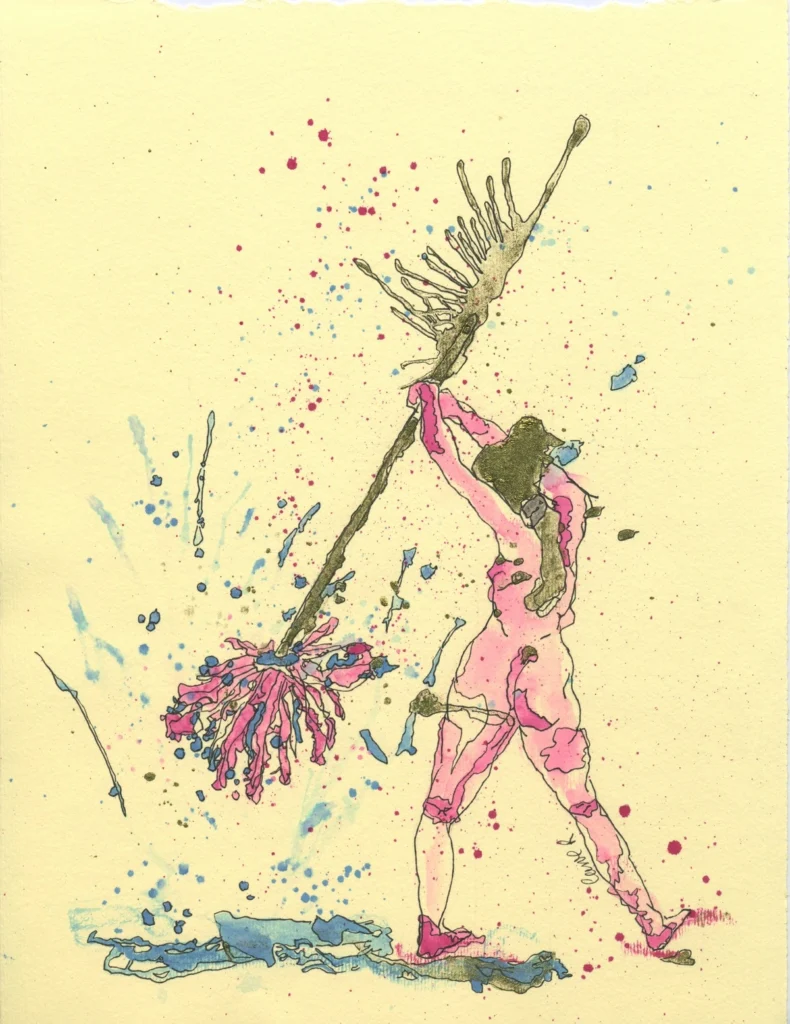Art as Rebellion: Fighting the Patriarchy Through Creativity
By Carol Reynolds
The Power of Art as Resistance
Stretching It Out – Cunt Bathing
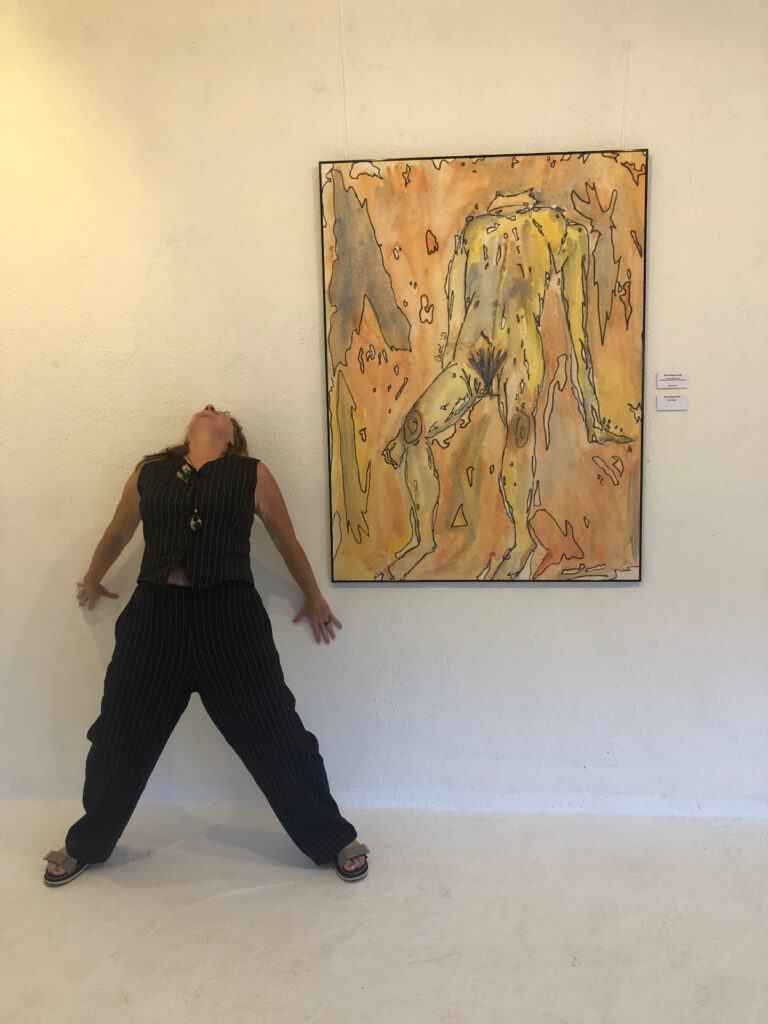
Art has always been a weapon of resistance, like a well-aimed stiletto at an unwelcome mansplainer. Women throughout history have wielded creativity like a battle axe, challenging oppression, reclaiming their narratives, and carving out spaces for self-expression. My work, especially my project RAW, follows this legacy. It asks what it means to exist, create, and rebel within a patriarchal world. And answers with colour, unique form and the vulnerable truth.
Patriarchy is that guest who wasn’t invited but somehow made itself at home, dictating what is valued, who is heard, and how women’s bodies are perceived. But feminist art has always been the slightly tipsy, fabulous, and uncompromising disruptor at the dinner table. It forces people to stop, feel, question, and, ideally, choke a little on their wine.
This is a lineage I proudly claim. In this blog, I’ll explore the artists who shaped me, the movements that drive feminist art today, and how my own practice raises my paintbrush like Joan of Arc ready to charge.
Feminist Art: A Legacy of Disrupting Patriarchal Systems
For centuries, women’s art has been dismissed as ‘hobby work’ while men’s scribbles on the back of a fag packet get enshrined in museums. But feminist artists have never stopped pushing back against the patriarchy. As Art historian Hilary Robinson points out, “feminist art isn’t just about representation—it’s about shaking the system awake.”
Take Linder. Her razor-sharp collages dissect images of women like a surgeon cutting out patriarchal rot. Her exhibition Danger Came Smiling (currently at The Hayward Gallery, London) is a 50-year reminder that we don’t have to accept the way women are framed, literally or metaphorically. “I use my surgeon’s scalpel to cut away all that is superfluous,” she says. Translation: I take sexist nonsense and turn it into feminist gold.
This radical tradition fuels my collection RAW. My figures may appear soft, beautiful, and naked, but the stories behind them strip away illusion. Pain, trauma and resilience, all are etched into every layer. The male gaze may show up for the aesthetic, but it will be challenged.
Don’t Look At Me – When you’re finally seen and heard, then judged and dismissed. Sometimes, it’s just easier when you don’t look at me.
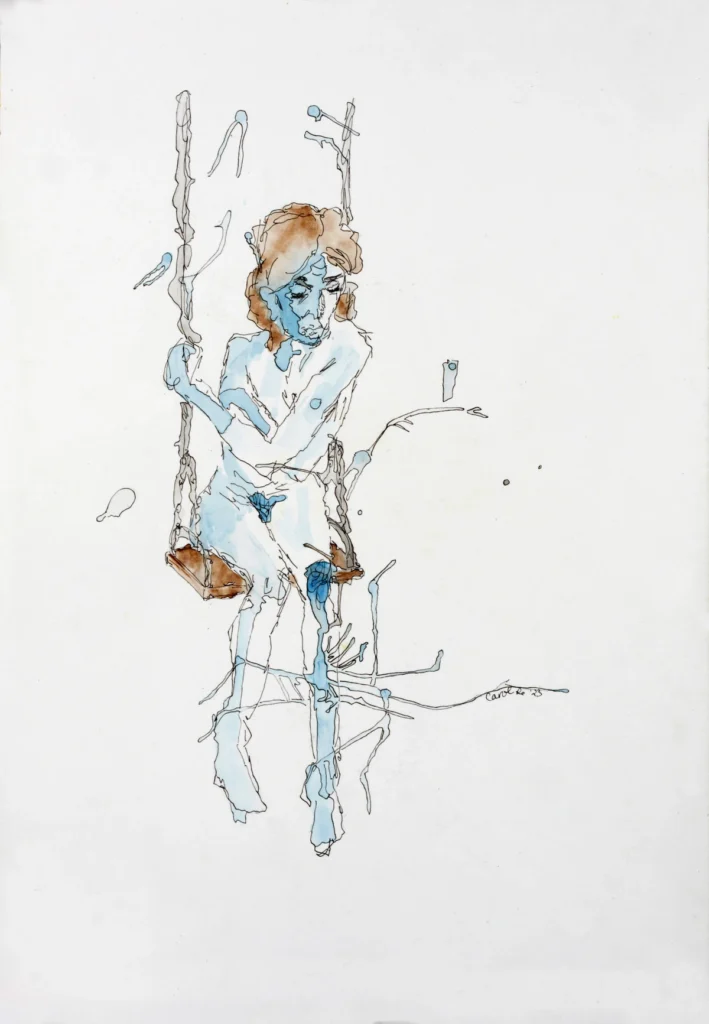
My self-portraits follow the same principle. No filters, no artful staging, just me dishevelled, honest, unposed. Frances Borzello, in Seeing Ourselves: Women’s Self-Portraits, reminds us that women have always used self-portraiture to claim space, not as muses but as the main event. That’s the energy I channel.
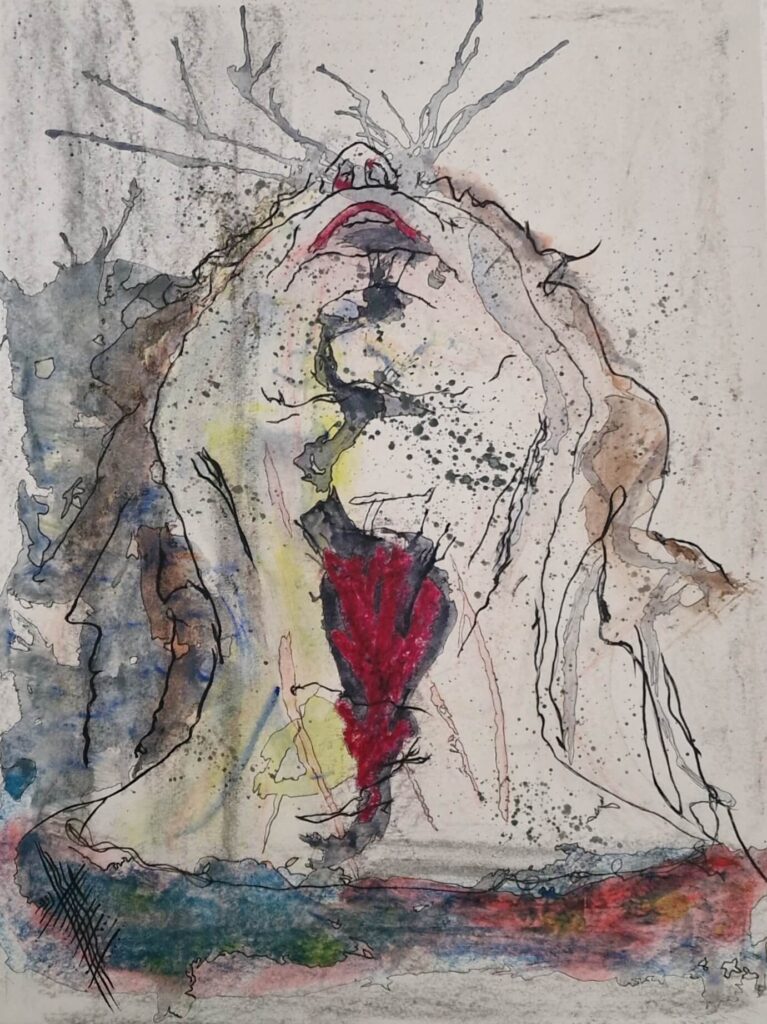
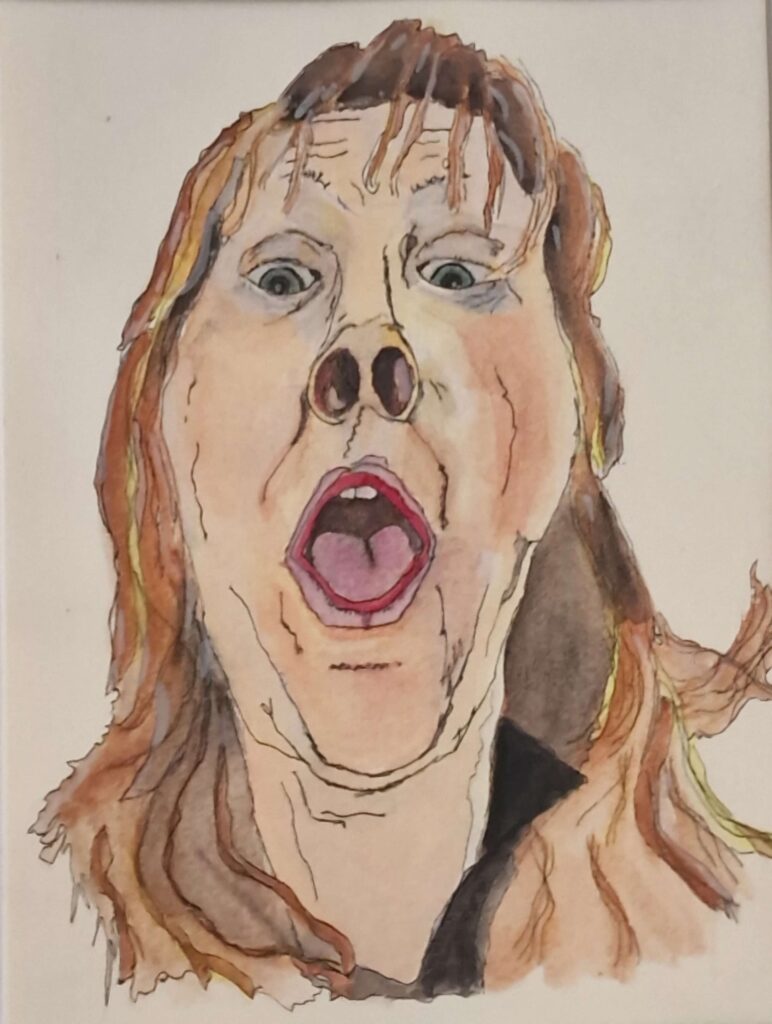
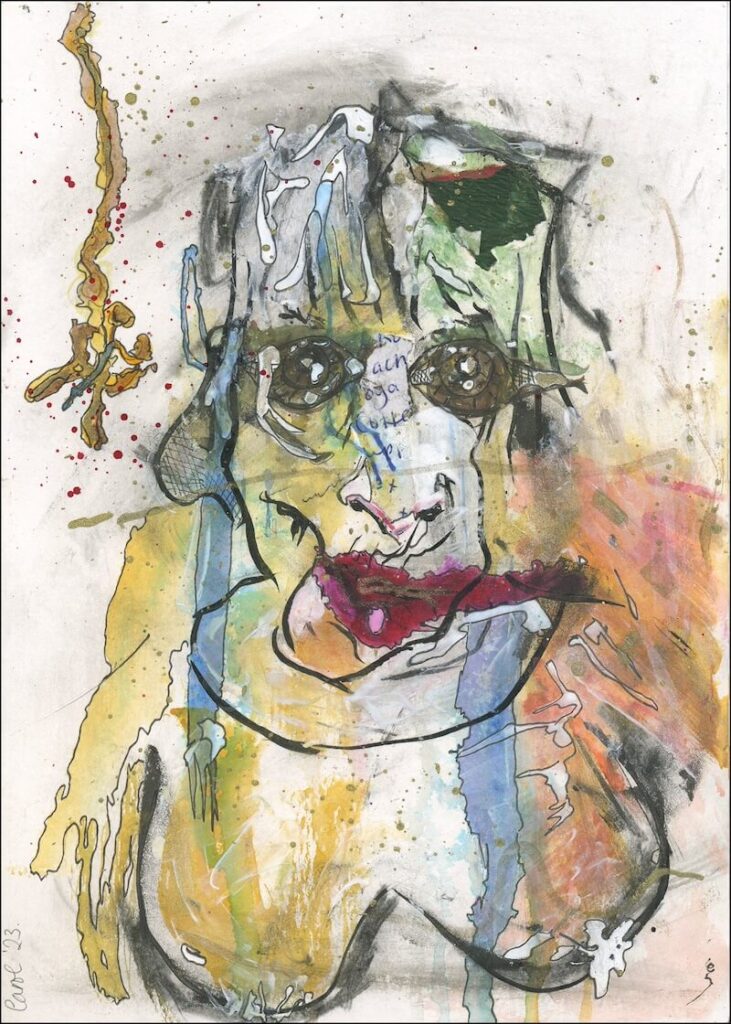
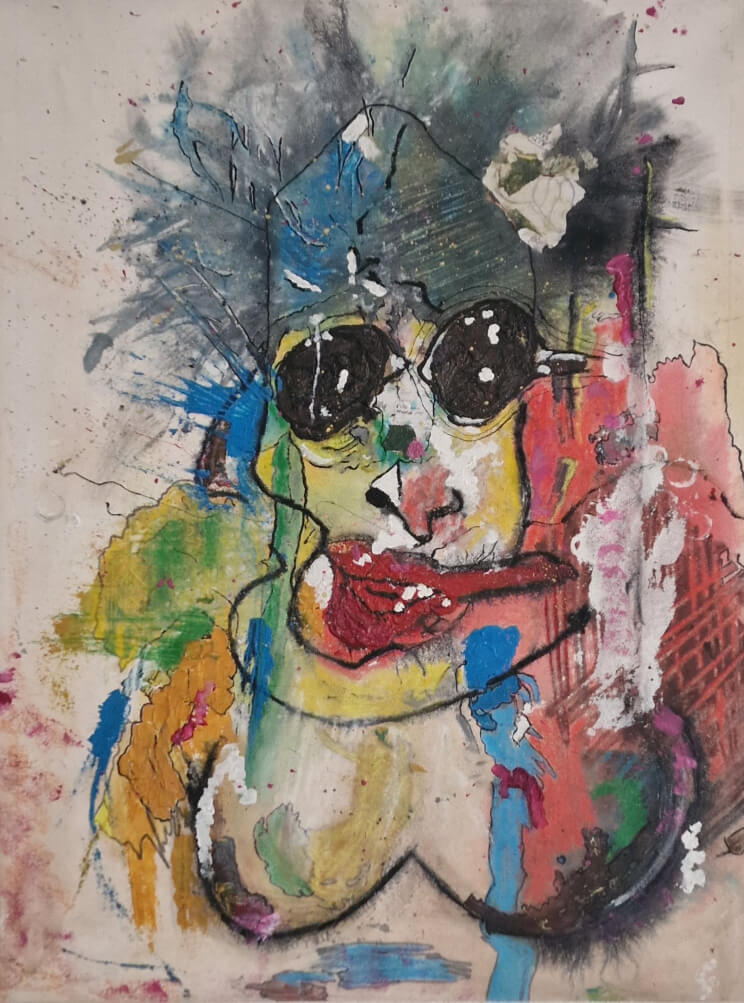
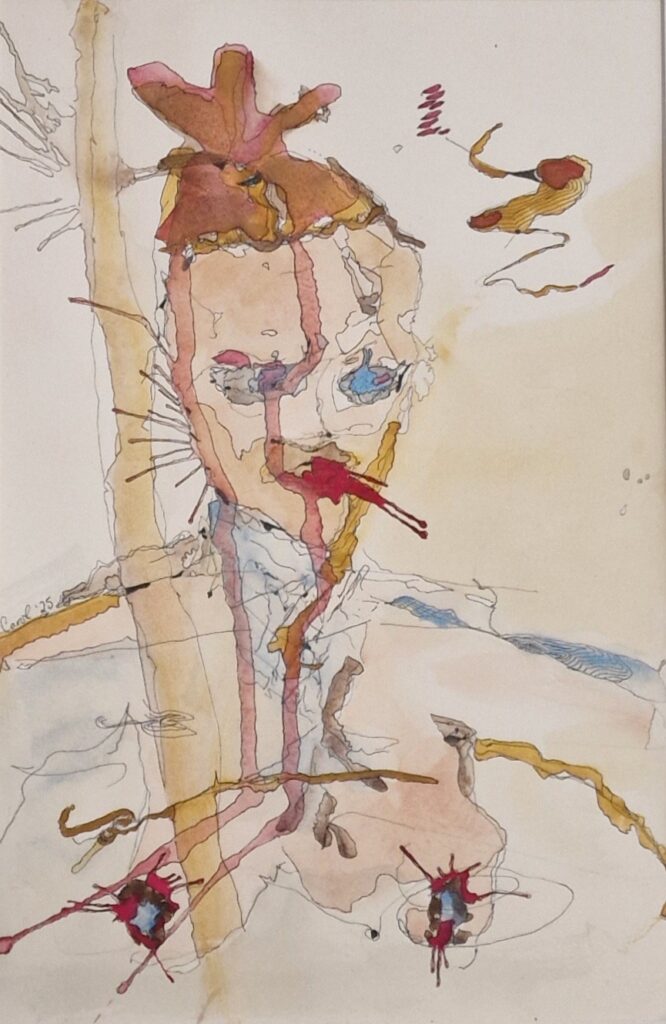
My Influences: Feminist Icons and Kindred Rebellions
Jenny Saville
Jenny Saville paints bodies in all their unfiltered glory, bruises, scars, folds, and all. Her larger-than-life portraits obliterate the polished, airbrushed ideal. Her work is what happens when you say, “Screw perfection. Let’s get real.” A gut punch to the sanitised feminine ideal.
Tracey Emin
Tracey Emin makes pain public and refuses to package it prettily. Her neon texts, raw sketches, her famous My Bed, it’s all a dare to feel something real. Like her, I’ve come to see my vulnerability not as a flaw but as a super power.
Käthe Kollwitz
Käthe Kollwitz’s emotional drawings of women, workers, and war scream with urgency. Every line is sad and heavy it demands: pay attention! In Heavy I channelled that same burden and silent scream.
Kaethe Butcher
Kaethe Butcher’s elegant lines whisper truth with the impact of a sledgehammer. Her women aren’t hypersexualised, they’re whole. They hold space for vulnerability and strength, much like my Intersecting Collection.
Heavy – Living in chaos and oppression, caused by the dominance of toxic masculine energy
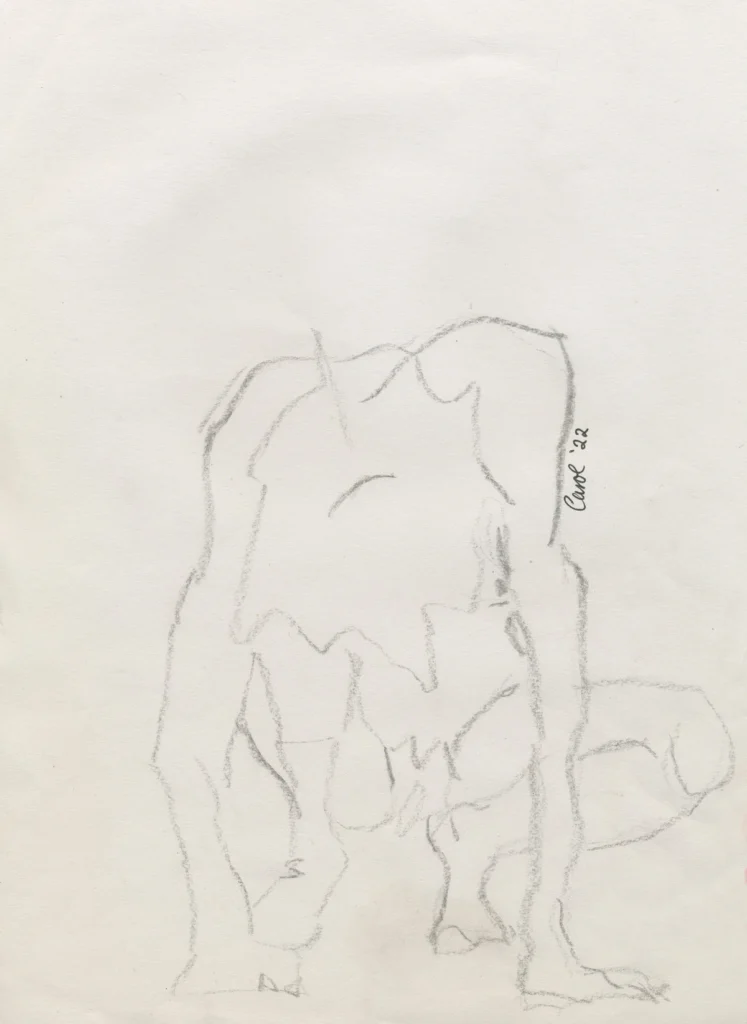
Digital Activism and Rage as Catalyst
Feminist art has found its megaphone in the digital world. Movements like Ni Una Menosin Latin America and South Korea’s 4B Movement have pushed feminist rage into the mainstream. Their online presence turns grief and anger into action. As Ni Una Menos declared: “We want to be alive, free, and debt-free”. Artworks like Regina José Galindo’s blood-soaked performance Quién Puede Borrar las Huellas?” echo this urgency, walking barefoot through Guatemala City, she left bloody footprints as a protest against femicide. Online, such imagery becomes contagious, fueling digital resistance and collective rebellion against toxic patriarchal systems.
I remember a weekend of rage after hearing the Russell Brand allegations and his, holier than though, denial. Then watched as the media and public claimed ‘innocent until proven guilty,’ ‘trial by media’. Yet again, the world tiptoed around a man’s reputation while women were expected to whisper their pain, in judgement. Yet false rape accusations are nearly nonexistent (0.005%), but still the public panic persisted. Meanwhile, 1 in 3 women globally experience violence, at the hands of men. That’s the statistic we should worry about.
So, I made art. I made Branded.
Branded – Two art pieces born from rage, shame and a need to speak.
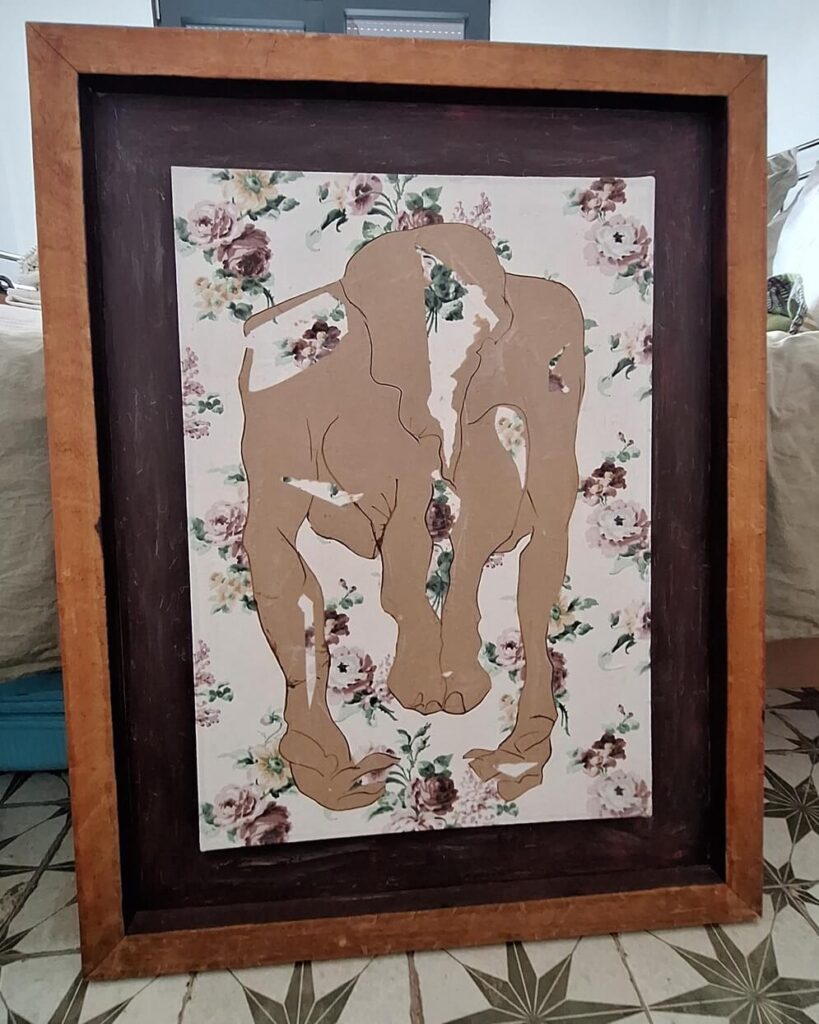

Read my article Branded for a more in-depth understanding of these two pieces.
Art gave shape to my fury and turned it in to something others could feel too.
The Pink Corset: When Resistance Gets Personal

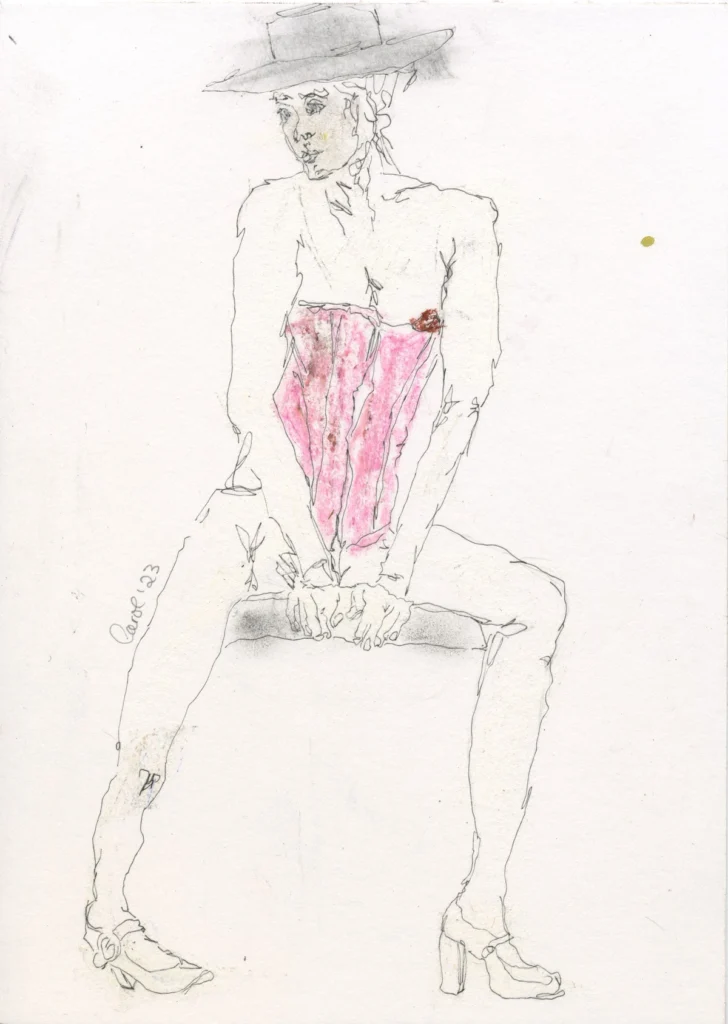
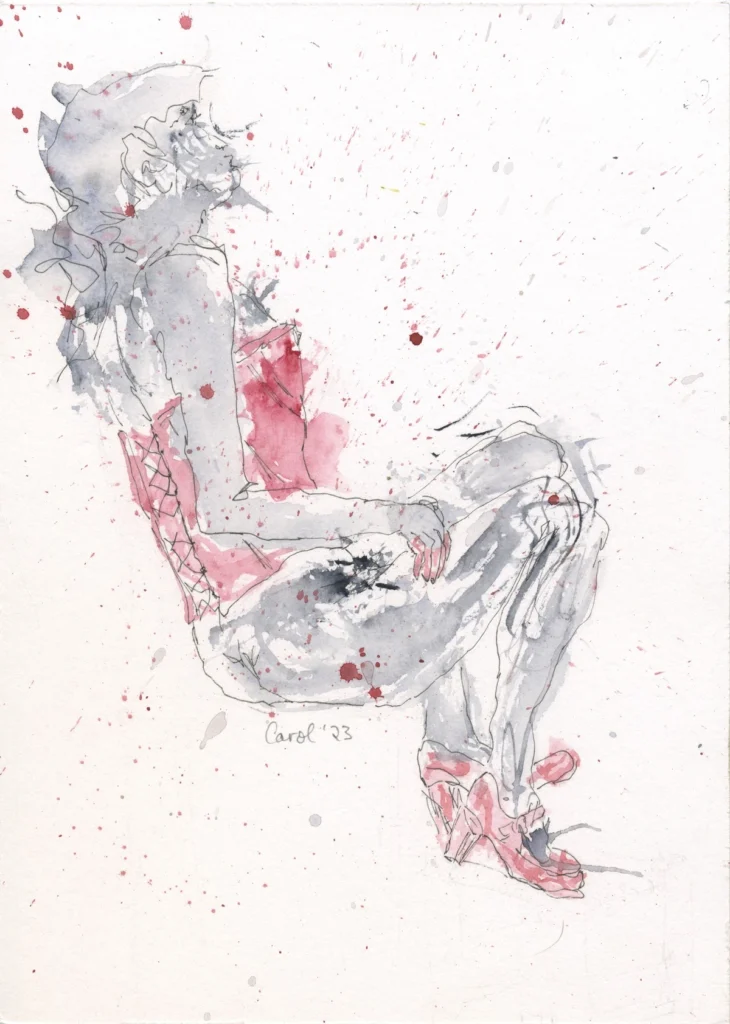
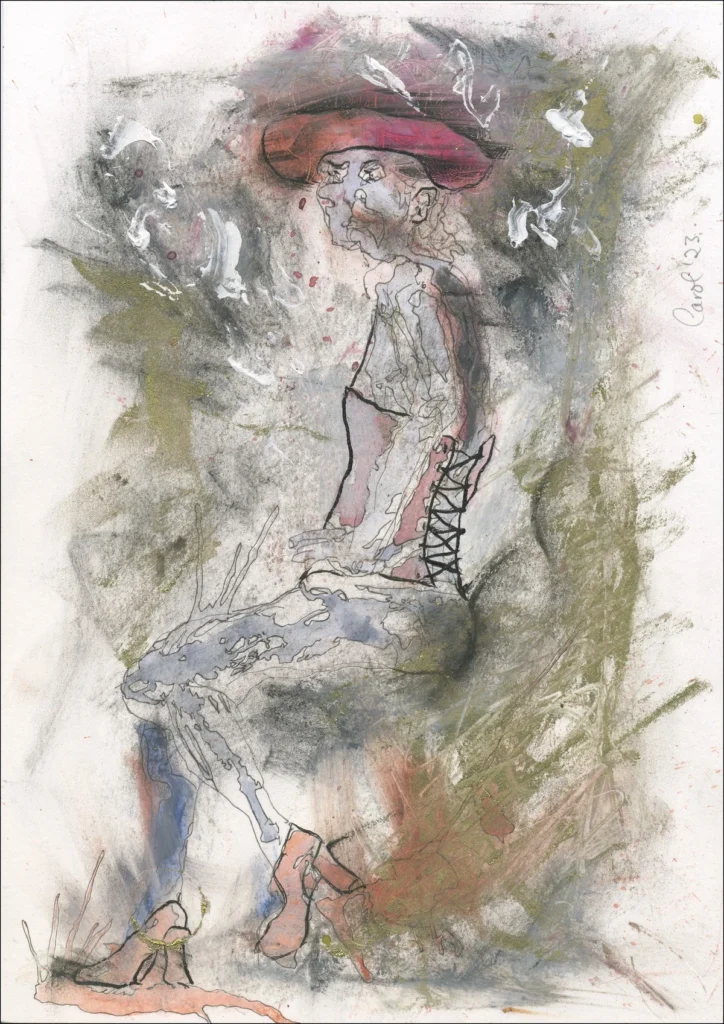
The Pink Corset
These watercolours began as five-minute nude sketches in a life drawing class. Then someone added a pink corset and heels to the model…. And everything shifted. What was raw and real became sexualised, staged. I kept drawing, but something cracked to my core.
The corset has always been loaded, historically a tool of control, later reclaimed by rebels like Vivienne Westwood. In this moment, though, it didn’t feel like rebellion. It felt like a slap in the face.
This series is my protest: paint, discomfort and a touch of personal rebellion. Because sure, I was triggered but give it time and I’ll probably end up wearing that corset to take the bins out. Vive Vivienne!!!
Queer Identity and Why Visibility Matters
The patriarchy thrives on rigid gender roles, a very fragile Trump Tower built on outdated traditions and fear. Gender fluidity and LGBTQIA+ identity threaten its structure, so it reacts with moral panic and repression.
In my art, I build figures that defy categorisation. My Intersecting Collection creates gender and sexuality forms that blur and intersect, whilst quietly screaming ‘what’s in my pants, is none of your fucking business.


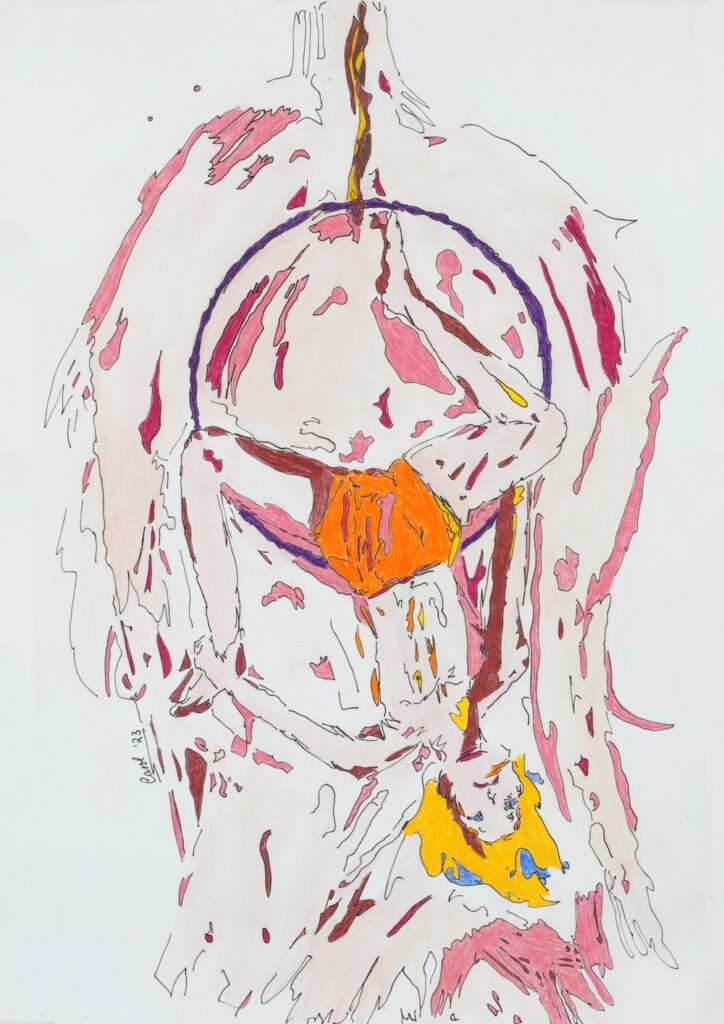
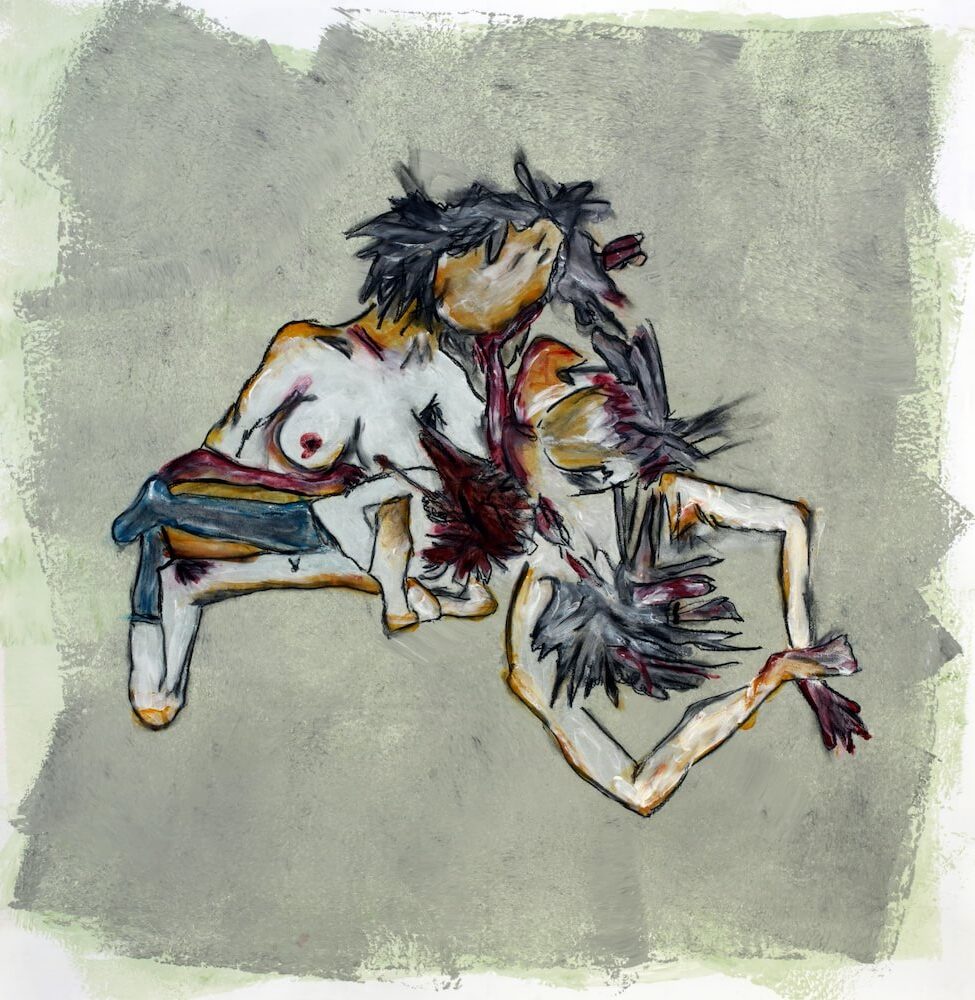
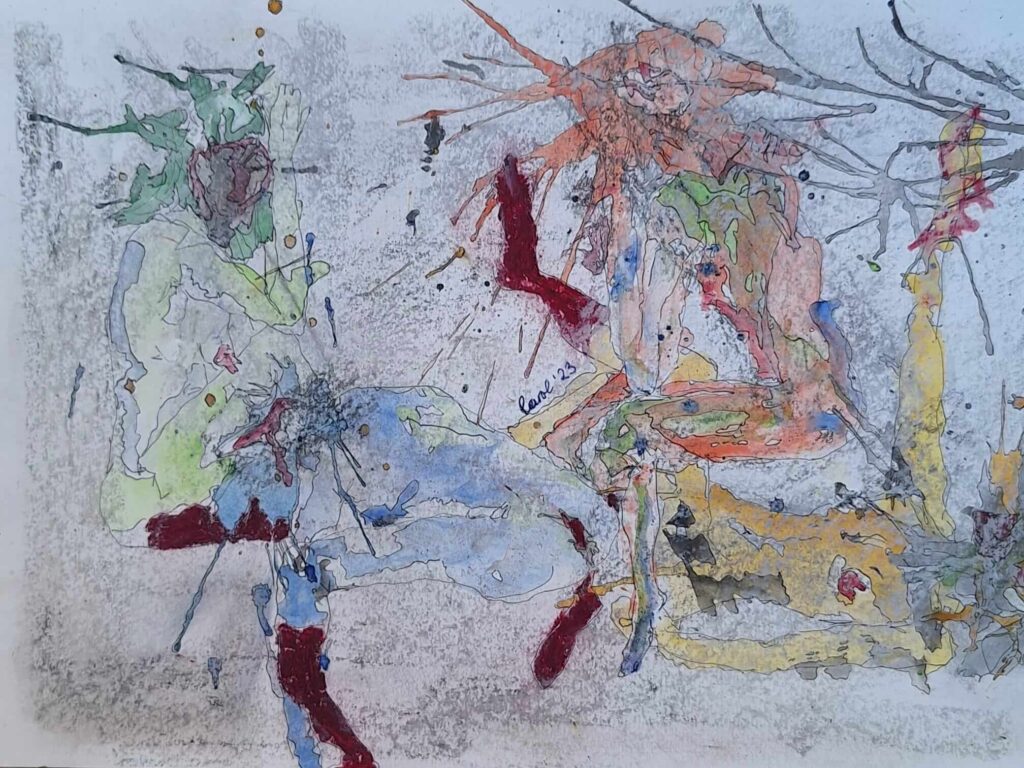
Art that challenges the ‘norm’ is dangerous, because it highlights that gender is a construct, not a commandment. And what’s constructed can be dismantled.
And who knows, maybe I wouldn’t have waited until I was 63 to marry another woman, had I seen lesbian love represented and normalised when I was growing up. Visibility matters. When young people see fluidity in gender and sexuality reflected back at them, it gives them permission to explore, to belong, and to step into their truth sooner, without the decades of detour, insecurity and doubt.
Art as Rebellion, Art as Power
Feminist art has always been more than just pretty pictures. It’s a call to arms, a disruption, a perfectly manicured middle finger to the status quo.
My work is my small act of defiance, of making people pause, feel and maybe question.
Because, that’s what art does best. It makes us feel, it makes us uncomfortable, and if we let it, it makes us fight back.
Mop Wielding Warrioress – Cleaning up his mess
